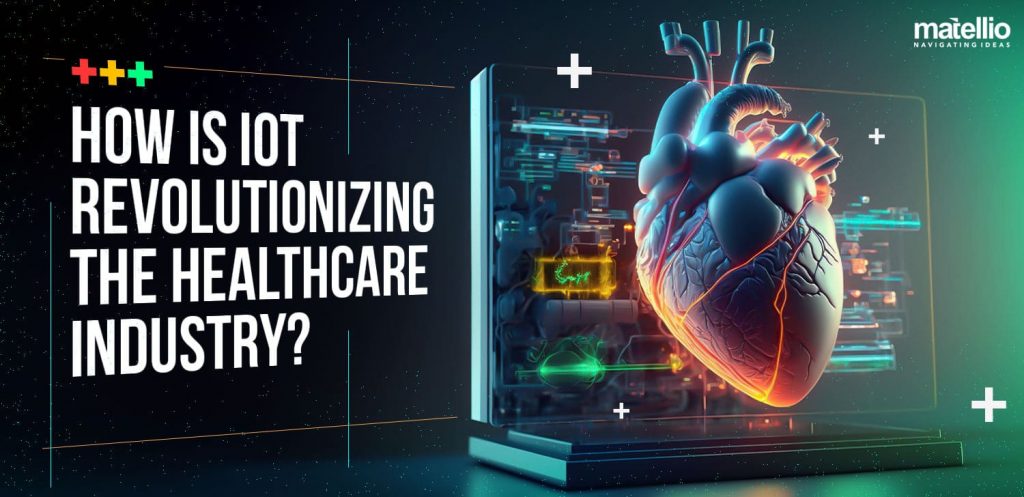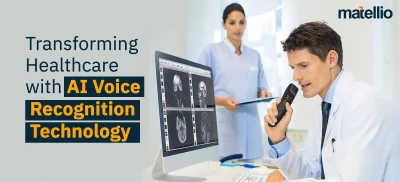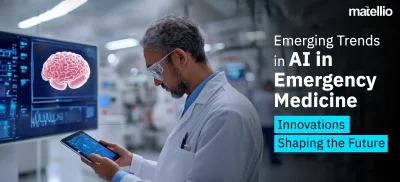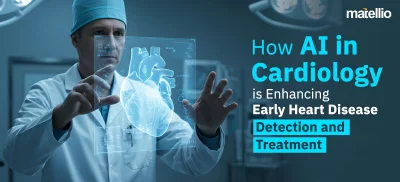
Since it was first coined in 1999 by the British technologist Kevin Ashton, the Internet of Things (IoT) has come a long way. In the past two decades, IoT has found its way into most industries. The elevator pitch for IoT is that it is a network that doesn’t just connect people but things/devices as well.
By creating a network of devices capable of interacting with one another, IoT has opened many exciting new avenues. From scientific research to building more streamlined business processes, IoT has countless applications in various industries.
IoT is one of the biggest breakthrough technologies in the last ten years. According to the data posted by Statista, the global IoT market was worth 383 billion U.S. dollars in 2020 and is expected to hit the 1 trillion mark by 2030. Furthermore, consumer spending on smart home products and services is projected to go beyond 170 billion U.S. dollars by 2025. Also, the number of houses with smart home systems is expected to be somewhere near 400 million globally.
These numbers indicate a consistently growing interest in IoT from various industries. But while some sectors merely use IoT to make things easier for themselves or get “innovation points” from their customers, industries like the healthcare industry are being changed inside out by this technology.
And in this post, we will explore how IoT is revolutionizing the healthcare industry.
So without wasting any time, let’s dive in!
The Rise of IoT in the Healthcare Sector
The healthcare industry is vast and complicated. And after the recent pandemic, it has become very clear that there are gaping holes in various healthcare processes that need to be plugged. Like most industries, the Covid pandemic made the leaders in the healthcare sector realize how essential going digital and having a streamlined internal process is. And IoT is one of the biggest weapons in the healthcare industry’s arsenal to become a well-oiled machine.
From blood glucose monitoring and IoT-enabled CPAP machines to cure sleep apnea to tracking critical deliveries and sending vital patient data from ambulances to hospitals, IoT has many applications in the healthcare industry, which can be enhanced through custom healthcare software development services.
With the help of wearable devices such as Fitbit and Apple Watch, doctors can track the vitals of their at-risk patients. During and in the wake of the Covid pandemic, remote consultation became a big area of focus for the industry leaders. Since people couldn’t visit their doctors physically, healthcare providers quickly moved towards telemedicine platforms so that people could get the medical attention they required remotely.
Also Read: IoT Consulting Services: Everything You Need to Know
How is IoT Revolutionizing the Healthcare Industry?
In this section, we will learn how IoT is helping healthcare businesses and providers tackle the various problems in the industry.
1. Remote Health Monitoring System
In the post-covid era, remote health monitoring system is no longer a novelty but a necessity. During the pandemic, people could not reach their doctors due to lockdowns and social distancing measures. This led to many complications since people in dire need of medical attention were now left helpless. But even before the pandemic, people living in remote and less urbanized areas often found it difficult to get proper medical attention. It was partly because of the lack of the required medical expert in their area and partly because of the transportation problem. Traveling back and forth for every checkup was very laborious and not good for their health. As a result, many people suffered and even lost their lives in some cases. But with the help of IoT, remote checkups and monitoring are possible.
IoT based remote health monitoring system are sophisticated tools that enable doctors, family members, and other healthcare workers to be in constant contact with the patient. These systems are especially very effective and useful for at-risk patients or people who have opted for home care. The patient’s vitals, such as heart rate, blood pressure, temperature, etc., can be monitored and tracked remotely using various IoT sensors. These sensors are attached to wearable devices such as watches, bands, eyeglasses, and smart clothing articles. They constantly read the patient’s vitals and stream them back to the doctors and healthcare workers.
On top of real-time monitoring, wearable devices are usually programmed to detect abnormalities in the wearer’s vitals. Based on the parameters set by the user, these devices can send alerts to doctors, family members, and in some cases, even contact ambulances.
For instance, a person with a heart condition can program his smartwatch to send an alert to his doctor and the emergency services if his heartbeat deviates from the normal readings. This way, these devices can save people’s lives.
With the help of the constant stream of data related to a patient’s vitals, doctors can also create trend reports and charts to get valuable insights.
For instance, if a person is on a certain medicine, this data can help the doctor deduce whether it is having the desired effect on the patient or not remotely. Patient data can then also be securely saved in EHR for further research.
2. Predictive Machine Maintenance
The healthcare industry has always been very reliant on technology and machines. From something as small as a blood pressure measuring machine to life support systems that can be the difference between the life and death of a patient, technology and machinery are essential for the healthcare industry. So it should come as no surprise that machines that keep us alive must be in good health themselves.
But machines break. Like humans, machines fall apart or stop working at their maximum efficiency. And in those cases, they must be fixed.
However, this becomes a bigger issue when people’s lives are at stake. Healthcare machinery needs to be kept in pristine condition at all times. A slight glitch can lead to life-changing mistakes, like a false-negative diagnosis of a deadly disease. But fixing a problem after it has occurred isn’t an option in the healthcare industry. If we wait for a fault to happen and then take action to fix it, people have already suffered. So the solution to proper machine maintenance is predicting failures and problems in advance and taking proactive measures to ensure those failures never happen.
So, consider leveraging healthcare technology consulting services as the experts can help you explore how IoT, coupled with other technologies such as AI and ML, can make that happen.
IoT, coupled with other technologies such as AI and ML, can make that happen.
Predictive maintenance is a process for predicting component failure and the right time for the service and maintenance of a machine. Sensors watch over the various parts of a machine, keeping an eye on their health. These sensors then send this data to a microcontroller that forwards it to a communication module. The data is then sent to the Cloud, where the concerned parties can access it. This way, people in charge of maintenance have a real-time view of a component’s health.
The received data can be analyzed using AI and ML, and faults and their severity can be efficiently predicted.
Once a maintenance alert has been generated, responsible people can take appropriate actions. With the help of predictive maintenance, hospitals, clinics, labs, and patients with home care, can keep their machines in proper conditions.
Also Read: Discover how AI in Oncology is revolutionizing early cancer detection, enabling precise diagnosis and personalized treatment for improved patient outcomes.
3. Disease Detection
The key to combating a deadly disease like cancer is early detection. While we have made many significant strides in fighting and detecting tumors, people still die every year. It is clear that our fight against cancer is not done. But thanks to technology, we are getting stronger and stronger against this disease. But while many advancements have been made in recent years, there is still a big scope of errors and misdiagnosis.
And perhaps nowhere are such errors more dangerous than in the case of cancer patients, where accurate diagnosis is critical. Even the most advanced technologies can fail to detect tumors, particularly in breast cancer cases. For example, breast cancer tumors are incredibly difficult to detect early, even with cutting-edge technologies like biopsy and mammography. All too often, these methods fail to detect a tumor or wrongly classify it as malignant or benign. This is a significant setback for the patient, as the window for early detection is short, and a misdiagnosis can be fatal. While these technologies are highly effective, errors can still occur due to breast tissue obscuring the tumor. Furthermore, biopsy and mammography are not equally effective for diagnosing cancers across different age groups. RPA in healthcare could help address these issues by automating repetitive diagnostic processes, reducing human error, and ensuring data accuracy in screening and diagnosis, ultimately improving early cancer detection rates.
Due to these limitations, the healthcare industry is focusing on IoT to help with the early detection of disease.
One of the most significant efforts in this direction comes from Rob Royea, CEO of Cyrcadia Health and the inventor of iTBra. It is a new wearable technology with embedded temperature sensors. It tracks temperature fluctuations in breast tissue over time. The data is then used by ML and predictive analytics to identify abnormal patterns in the breast that could be tumors. This way, breast cancers can be detected in their earlier stages. This technology is way more effective and accurate than traditional methods such as mammography, which is infamous for giving high numbers of false positives and false negatives.
In a study conducted on 93 benign and 108 malignant tumors, iTBra’s predictive model could differentiate between benign and malignant tumors with 78% accuracy, 71.5% specificity, and 83.6% sensitivity.
Similarly, IoT helps in detecting various diseases and has become a great asset in our war against cancers and other such ailments.
Read More:- IoT in Healthcare: Top 6 Use Cases
4. Data Collection and Disease Tracking
We live in an age where data is the king, at least for businesses. Due to the rise of the internet, smartphones, and social media, we are creating a tremendous amount of data, and companies in almost all sectors are using that data to create their marketing plans. But this data has another use as well. With the help of the data collected by wearable devices, companies can make striking health-related discoveries.
For instance, if in a particular area, wearable device data shows that the rate of respiratory problems is higher than average, that means something in that area is causing a lot of damage to people’s lungs. This is easily achievable using AI and ML in conjunction with IoT.
Another good example of how vital and helpful data collection can be is the recent Covid pandemic. Due to the virus’s mysterious origin and history and confounding nature, doctors and scientists across the globe were baffled. Nobody knew how to deal with this virus in the early stages, and for two years, Covid took countless lives. The massive data collection effort run by WHO and other such platforms kept track of the density of the infected in various parts of the blood.
Thanks to the persistent efforts of thousands of scientists across the globe and with the help of technologies such as IoT, Blockchain, gene editing, AI, etc., we were finally able to create a vaccine.
IoT played a crucial role in the data collection aspect of things. Wearables allowed doctors to monitor those covid patients who weren’t in a bad enough state to be hospitalized but needed medical attention. These devices gave doctors essential data about the virus and its symptoms on people. IoT devices also ensured the safety of doctors and other healthcare givers since they could monitor the patients without going near them.
A radical system that uses wearables, AI, IoT, and thermal imaging has also been proposed to pick out infected people in big crowds through predictive simulation in healthcare. With the help of thermal imaging lenses with face recognition capabilities, people with higher than average body temperatures can be singled out. Then these people can be identified, and their information can be passed on to the relevant authorities. This can help speed up diagnosis and help in containing the virus.
Conclusion
The IoT technology is helping the healthcare industry become more efficient, streamlined, and offer better services to the patients. From remote patient monitoring and consultation to early detection of fatal diseases, IoT is enhancing the way hospitals and medical professionals work in countless ways. Users are also embracing the IoT technology. With the massive adoption of wearable technology and the parallel mHealth surge, patients are leading better lives thanks to IoT.
Furthermore, with 5G at the horizon and AI and ML technologies getting more and more sophisticated every year, the healthcare industry is only going to focus more on IoT adoption.
If you are looking to get IoT healthcare solutions developed, Matellio has years of experience working with the edge technology to create smart and fault-tolerant IoT solutions. Our expert embedded developers and IoT engineers help healthcare companies design and develop IoT solutions that guarantee a spike in the overall efficiency of the company. From telemedicine apps to cloud-based IoT software development, Matellio offers vendor-agnostic and customer-centric development services to all. Whether you are looking to augment your development team or hire dedicated developers to create your software, Matellio offers a wide range of IoT development services for businesses of all sizes.




